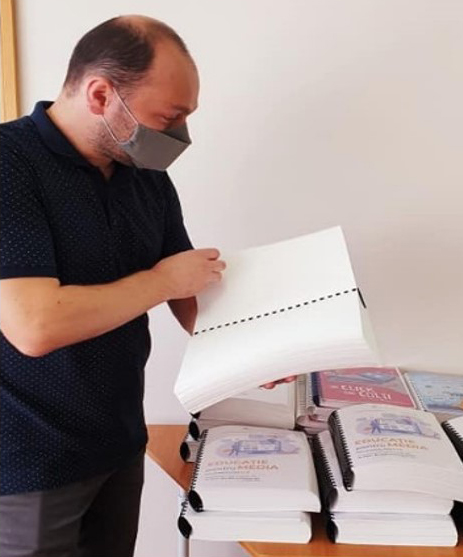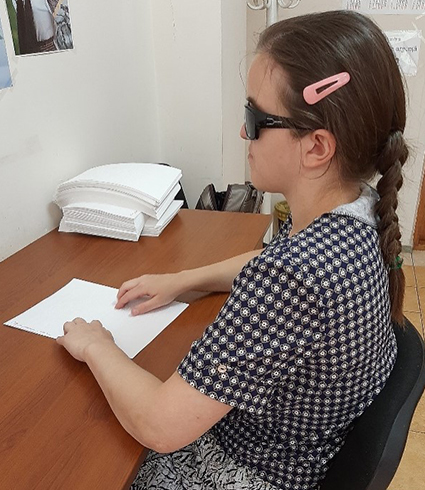For the first time in Moldova, the three existing media literacy textbooks in the country for all school levels, as well as a textbook for practical exercises, have been edited and printed in Braille.

Stefan Oprea, Vice President of the Moldova Association of the Blind, said, “The media today is an inalienable part of the society we belong to. We want this new subject to be accessible to people with visual impairments from school [onward] so that students can distinguish from an early age an authentic news [item] from a false one. And, most importantly, we want people with visual impairments to have unlimited access to information in a format accessible to them.”
Multiple formats are available and distributed across the country
The textbooks were also recorded in an audio format (MP3) and are accessible on CDs.
All formats of the books will be available in three specialized Moldovan schools for the blind, in libraries throughout the country, and in the regional outposts of the Association, which has about 9,000 members.
“It will take us some time to adapt and introduce this subject into the curriculum,” said Aurica Brinza, director of one high school with vocational programs for visually impaired children in Chisinau. “For us teachers, it was very difficult to teach a subject when we do not have accessible materials for visually impaired students. I strongly believe that the new subject will be good for our children, it will organize them to be more attentive to what they read, listen or watch.”
Rethinking how to present media literacy for people with vision impairment
The Association also organized a workshop for its active members as well as a separate workshop for teachers to ensure a broader dissemination of the concept of media literacy.
Journalist and media education instructor Dumitru Stoianov helped to edit the textbook. He spoke to the workshop participants about the importance of critical thinking and healthy information consumption. “The biggest challenge in preparing the training session was to give up practically all the visual support and to organize the presentation around a verbal message in an interactive and interesting way (which seemed extremely difficult, if not impossible, at first),” he said.
“It was only during the presentation that I realized that any media consumer, whether with good or poor eyesight, is interested in the workings of storytelling, in the functions and mission of the media, and in modern media formats.”
About the media literacy curricula

The print versions of the media literacy textbooks and curricula were developed by the Independent Journalism Center from Moldova. The media literacy curricula for primary and middle schools were designed with the support of DW Akademie, and the high school curriculum was designed as part of Internews’ MEDIA-M project. The translation of the textbooks for middle school and high school into Russian was also supported by Internews.
In August 2019, after intensive advocacy, the high-school curriculum was approved by the National Council for Curriculum under the Ministry of Education, Culture, and Research from Moldova. As a result, media literacy is currently taught as an optional subject at all three levels of education, helping new generations of news consumers to develop their critical thinking skills.
The publication of the Braille textbooks was supported by a grant to the Association of the Blind within the USAID and Ukaid-funded “Media Enabling Democracy, Inclusion and Accountability in Moldova” (MEDIA-M) project, implemented by Internews.
(Banner photo: Dumitru Stojanov providea media literacy training for visually impaired people in Chisinau, Moldova. Credit: Internews)
